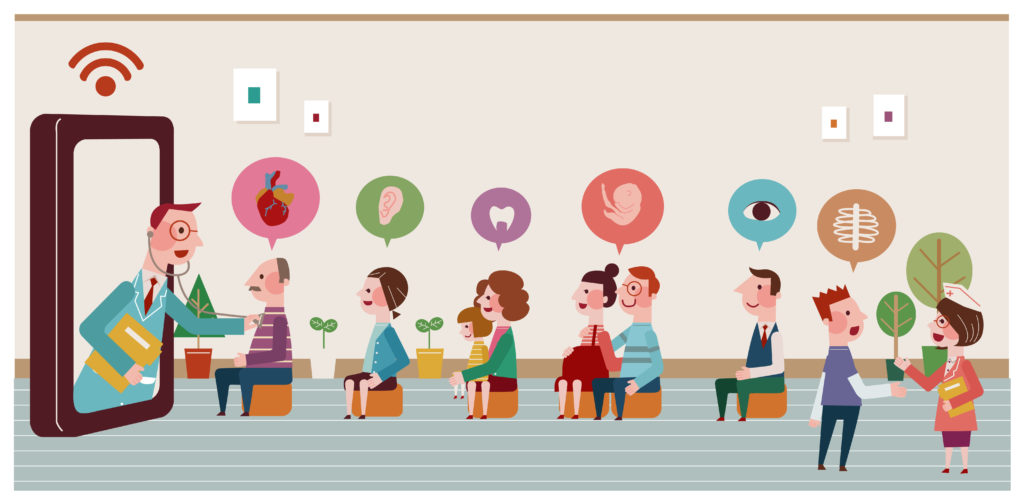The Doctor Is In: Evolving Patient Care
When the world changed due to COVID-19, we adapted. With a firm digital backbone in place, as a whole we migrated to a true digital-first mindset. The coronavirus pandemic has essentially taught us how to conduct our lives online through working, educating, monitoring our health, socializing, banking, shopping, and more. We have seen the advent of totally virtual scenarios for conferences, meetings, and social events, including holiday gatherings, birthday parties, reunions, and happy hours. Social media has seen an increase in new customers, engagement with existing customers and total screen time. People have changed their behaviors as a whole to get through this pandemic together.
As our thoughts turn to what life will be after this pandemic—the question we’re really asking is: what can we expect? How much behavior change will continue due to residual issues of the pandemic, and will the digital-first mindset continue? Have consumers and professionals come to value certain efficiencies enough to continue to embrace them? What behaviors will be forever changed?
The Healthcare Vertical
For health care, it has been an enormous effort to adjust and reframe, notwithstanding the taxation and overall burden this pandemic has placed on the system here in the United States and worldwide. While dealing with the influx of COVID-19 patients and social distancing measures, medical offices quickly translated their practices to telehealth opportunities to be able to continue to serve the population. The US Department of Health and Human Services eased and/or suspended certain regulations related to telemedicine, which was not a targeted mandate until the year 2021. The rules that were relaxed include the ability to use consumer-oriented video chat services and prescription services. Many health plans also waived copays for telehealth visits.
Telemedicine, still in its infancy, has been afforded an opportunity to shine, and has seen trajectory growth during this period. Telemedicine is predicted to be a behavior that withstands the test of COVID-19 time and leaps ahead into the future. Companies are now making available new insurance plans for small businesses that are centered on telemedicine and virtual primary care. These employers are counting on telemedicine to provide primary care as a way to lower healthcare costs while boosting the overall access to care. When one considers that this type of health care provides an opportunity for broader access to expertise and specialists to underserved areas, while offering convenience and flexibility in timing, lower costs, and ease of use, the prediction certainly makes sense.

Telehealth Adoption
Healthcare professionals are utilizing and benefiting from the available technologies while patients have taken to their phones, tablets, and computers to login for appointments when the doctor is in. On March 1 of this year, 40% of US practices had telemedicine systems. By April 1 that number jumped to 80%! Ninety-five (95%) percent of hospitals in the United States now offer a telemedicine option and 95% of employer-based medical plans offer it as well.
This kind of impact and increase does not happen without consequence however, and much like the way electronic health records systems have strived to develop, telemedicine is still in its infancy as a platform and will need to evolve and adapt to drive more efficiencies and better customer experiences.
Physicians have come to realize the technology as a value-add for their practices and patients. And patients have come to appreciate that they can address certain medical issues from the comfort of their own homes, which has been key during the coronavirus pandemic—a development that will no doubt continue once the current health crisis abates.
At this juncture, telehealth’s growth shows no signs of slowing down and widespread adoption appears imminent. Even when we emerge from this world of social distancing, telehealth is positioned to become mainstream. Look for the future to include more integrations with apps and wearables as an added benefit.